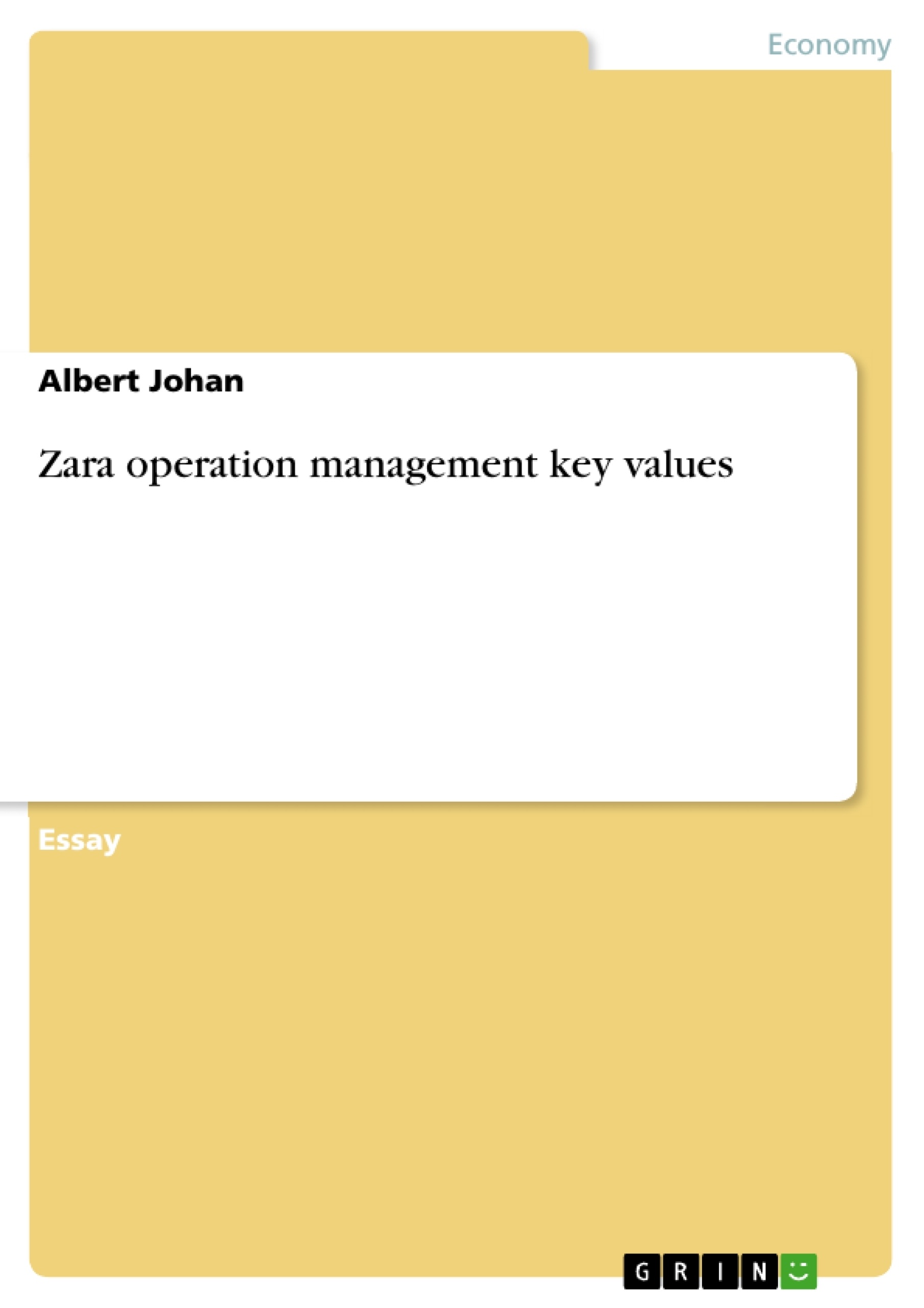As the largest division of Inditex, Zara accounts for 76% of its total retail sales. All of Inditex brands, including Zara, share a focus on providing fashion at affordable prices, excellent quality, and similar models for control of supply, production and distribution. Starting from its production stage, distribution stage and to retailing stage, Zara maintains a quality standard. The following points look at key elements employed by Zara’s business operating model in order to meet its high quality and operation standards.
In meeting its goal to provide customer with the latest fashion, Zara ensures to always fill its retail stores with a wide variety of clothing and most of these clothes only stay in the stores for two weeks period. Replenishment of inventory must constantly be done every day to cope with customers’ demand. Two weeks constant rotations of new products encourage customers to buy what they want the first time they see it, knowing that what they like may not still be in stores the next time they visit Zara.
Table of Contents
- What are the key elements of Zara's business operating model?
- Zara's production stage
- Zara's commercial team
- Zara's manufacturing factories
- Zara's central distribution warehouse
- Zara's retail store distribution
- Zara's just in time inventory system
Objectives and Key Themes
This text delves into the key elements of Zara's business operating model, analyzing how the company achieves its goals of providing fashionable clothing at affordable prices while maintaining high quality standards.
- Zara's unique approach to inventory management and product rotation
- The importance of a highly efficient supply chain and distribution network
- Zara's strategy for maintaining control over production and manufacturing
- The role of technology in supporting Zara's operational efficiency
- The significance of customer-centric decision-making in Zara's business model
Chapter Summaries
- This chapter explores the core elements of Zara's business operating model, focusing on its approach to production, distribution, and retailing. It highlights Zara's emphasis on speed, flexibility, and responsiveness to customer demand.
- This chapter dives into the structure and function of Zara's commercial team, emphasizing the importance of collaboration and expertise in design, market analysis, and procurement. The chapter also explores how Zara leverages technology to facilitate efficient communication and information sharing.
- This chapter examines Zara's manufacturing operations, highlighting the benefits of owning its own factories and utilizing strategic outsourcing. It also discusses Zara's approach to quality control and its relationships with suppliers.
- This chapter focuses on Zara's central distribution warehouse and its role in handling logistics and quality assurance. The chapter also discusses the establishment of smaller warehouses in key markets to enhance distribution efficiency.
- This chapter explores Zara's distribution system, outlining the process for delivering products to its retail stores around the world. It emphasizes the importance of time-based logistics and the company's intricate scheduling program.
Keywords
The key topics and concepts addressed in this text include Zara's business model, fast fashion, inventory management, supply chain management, distribution networks, production efficiency, quality control, customer-centricity, and just-in-time inventory systems.
- Quote paper
- Albert Johan (Author), 2009, Zara operation management key values, Munich, GRIN Verlag, https://www.grin.com/document/512230




